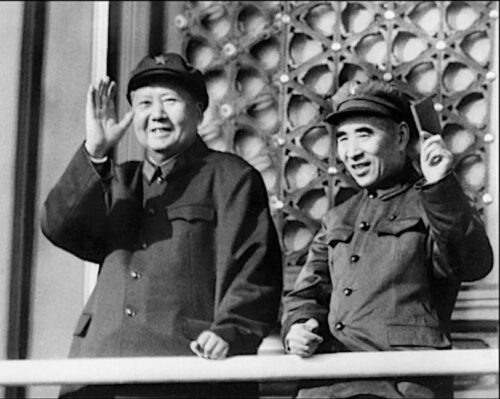This Week in China’s History: September 26, 1980
“To strive for the goal of holding the total population in our country to under 1.2 billion by the end of the century, the State Council has made an appeal to the people of the entire country to promote the policy of each couple having only one child. The Central Committee now calls on all Communist Party members…to take the lead in responding to the State Council’s appeal with positive and practical action, and to carry out enthusiastically and responsibly the necessary propaganda and education among the broad masses with patience and care.”
This was the edict issued by the CCP’s Central Committee, commonly taken to be the start of the one-child policy, a central feature of Chinese government policy for nearly four decades, during which time it attracted criticism from abroad and resentment from within.
A state’s decision to impose its will onto the reproductive choices of its citizens is shocking. It’s not surprising, seen in that context, that the one-child policy was met with wildly divergent opinions: some seeing it as a frightening violation of human rights; others celebrating it as a bold attempt to save the world. In her path-breaking book on the policy, Just One Child, anthropologist Susan Greenhalgh calls the policy “one of the most troubling social policies of modern times” that was “out of touch with Chinese reality.” “Carried out in defiance of cultural and political reason, the policy has induced social suffering and human trauma on a vast scale.”
The policy remained in place until 2015, and today the Chinese government is struggling to encourage its people to have more children. It’s worth looking back at the start of this controversial policy, when China embarked, in the words of historian Sarah Mellors Rodriguez in her recent book Reproductive Realities in Modern China, “one of the most ambitious social engineering projects to date and considered emblematic of global efforts to regulate population growth during the twentieth century.”
September 26, 1980, was the date of this edict, but it’s a somewhat arbitrary — dare we say it? — birthday for the policy. At least a year earlier, Party officials, including Dèng Xiǎopíng 邓小平, were publicly “recommending” or “encouraging” that families be limited to one child in many circumstances, but the foundations for the policy went back to the 1950s.
The P.R.C.’s first census, in 1953, was accompanied by study groups meant to analyze the patterns and implications of population growth. In 1956, Premier Zhōu Ēnlái 周恩来 began advocating population control, to be achieved by encouraging women to have children later in life and to space them out more. Academic support for this approach came from economist Mǎ Yínchū 马寅初 马寅初, who in 1957 published New Principles of Chinese Population and also presented his research to the National People’s Congress. Ivy-League educated and president of two universities in China — including Peking University — Ma was one of the most influential academics in China.
Ma’s reputation for bold, often unorthodox theories was evident in his work on population. A large workforce — industrial and agricultural — was essential to China’s post-war(s) reconstruction, but Ma forecast dire challenges for China if it failed to curb its rapidly growing population. Government intervention was necessary, Ma argued, to avoid calamity.
Ma’s theories drew on the works of Western economists like Malthus and Ricardo, among others, who postulated the crippling effects of a growing population on economic growth. Malthus’s theories were, in a word, wrong, but in China they were condemned not for inaccuracy but bad politics. Marx himself had claimed that they were attempts to suppress the growth and power of the working class, and such orthodoxy found favor in the People’s Republic. Ma was denounced as a tool of the bourgeoisie, his policy recommendation seen as attempts to suppress China’s growth.
Instead, China’s approach to population control — as in so many other areas — turned to the thinking of Máo Zédōng 毛泽东. Mao saw China’s population as its trump card, one that would help the country overcome a late start to leapfrog its rivals in economic development. Mao rewarded families who had multiple children with literal medals. During the 1950s and ’60s, population surged, growing from 490 million, at the P.R.C.’s founding, past 700 million in the early 1960s, and approaching 900 million by 1970.
(Ironically, despite Mao’s incentives, China’s birth rate declined throughout his leadership, notwithstanding dramatic drops and spikes surrounding the Great Leap Forward.)
The decision to reverse Maoist natalism emerged as the Cultural Revolution ended. It’s important to remember that while China took the movement to an extreme, China’s perception of population as a problem was consistent with global trends at the time. Fears over global overpopulation were exemplified by Stanford researchers Paul and Ann Ehrlich, whose 1970 book The Population Bomb warned, “The world, especially the developing world, is rapidly running out of food…In fact, the battle to feed humanity is already lost, in the sense that we will not be able to prevent large-scale famines in the next decade or so.” The opening lines of the book are even blunter: “In the 1970s hundreds of millions of people will starve to death” because of overpopulation.
Such predictions would prove to be wildly offbase with the benefit of hindsight, but found receptive ears in the CCP’s leadership, which returned to the research of Ma Yinchu. Ma’s work on population, muzzled since 1957, returned to public view in 1979. Ma was rehabilitated and his theories became the basis for new government policy. Social and natural scientists, including demographer Sòng Jiàn 宋健, developed new approaches to population control based on the “population bomb” premise, determined to avoid population growth that would inhibit economic growth. Not only did the new policy recommend smaller families, but they called on the government to enforce that standard. In 1982, the policy was written into the constitution.
Most simply, and simplistically, the policy restricted married couples in China to one child, but the scale of such a broad and deep social intervention was beyond either comprehension or implementation. Greenhalgh describes the 1983 attempt by planners to meet their goal by “sterilizing one member of all couples with two or more children and aborting all unauthorized pregnancies.” The results went far beyond tens of millions of sterilizations and abortions: “unexpected magnitudes of social suffering, as baby girls were killed, women’s bodies were damaged, and village life was torn by violence and fear.”
Responding to the instability such radical intervention threatened, the Party in 1984 rolled back so that a second child was permitted in many cases; it’s estimated that only about one-third of the country was subject to the original mandate. Nonetheless, the social implications of the policy were enormous, particularly because of the strong cultural desire for boys.
Enforcement was uneven and often arbitrary, depending largely on local officials. Forced sterilization and abortion were used to punish pregnancies after a first child was born. Rates of infanticide surged, almost entirely for girls. In other cases, officials turned a blind eye or enforced fines. Those of means could pay what amounted to fees to have additional children. Ultrasounds to determine sex became illegal because of the extensive practice of sex-selective abortion. In her book Unnatural Selection, journalist Mara Hvistendahl describes village after village, and city after city, in China where boys outnumber girls by 1.4, 1.5, 1.7, even 2:1, with catastrophic social implications. “It seems so basic,” she states bluntly, “you cannot have all boys, all the time, and expect your society to get very far.”
In the end, the one-child policy was the worst of both worlds: it had wide-ranging, usually negative, social impacts, but it didn’t achieve its goal. Population growth did slow, dramatically, but in ways that mimic the demographic changes of nearly all industrializing societies. It’s not clear that the policy had any impact on population growth. By 2010, at the latest, it was evident that China needed more young people to maintain economic growth and social stability. The one-child policy was gradually dismantled, and has now been replaced with incentives to have more children.
A growing body of research — in addition to what I have already mentioned, Mei Fong’s One Child or the documentary film One Child Nation — suggest that one of the greatest impacts of the policy was individual mistrust and resentment of government officials by families seeking to make their own reproductive choices. Perhaps there are lessons in that.
This Week in China’s History is a weekly column.







